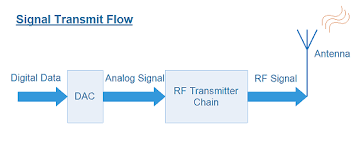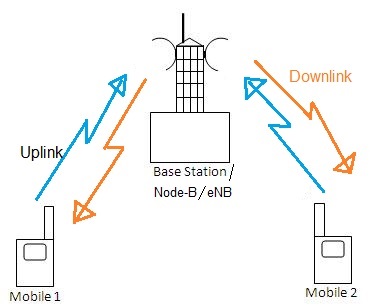
How to Block Drones with a Drone Jammer
In an age where the sky is dotted with drones, the importance of drone jammers has never been more significant. From commercial deliveries to personal

| Type of Signal Jammer | Description |
|---|---|
| Cell Phone Jammer | Disrupts signals used by mobile phones, making it impossible to make calls or send texts. |
| WiFi Jammer | Blocks Wi-Fi signals, preventing devices from connecting to the internet via Wi-Fi networks. |
| GPS Jammer | Interferes with GPS signals used for navigation, causing confusion in determining locations. |
| Drone Jammer | Disrupts signals between drones and their controllers, potentially leading to loss of control and crashes. |
Signal jammers might sound like something from a sci-fi movie, but they’re real devices used to mess with wireless signals. Think of them as the “mute button” for cell phones and other gadgets. Let’s break down what they are and how they actually work.
Wireless signals are like secret messages sent through the air using invisible waves. You know how Wi-Fi connects your devices to the internet without any wires? That’s all thanks to these signals. They’re like the cool kids of the communication world, carrying information between phones, laptops, and other gadgets.

Just as Scarlett Johansson’s character in the movie “Lucy” had the ability to see things beyond human vision, wireless signals exist beyond our sight.

Imagine these signals as music notes that travel really, really fast. They’re like magical waves that can carry sounds, pictures, and messages. But, to understand these notes, we need a special translator called a modem. This little gadget turns the signals into things we can understand, like videos or voice messages.
Cell phones have gone through big changes over time. They’ve had different “generations” with cool new features. It’s like going from an old flip phone to a super-smart smartphone. Each generation is like an upgrade for cell phones.
Now, let’s talk about signal jammers. They’re like the troublemakers of the wireless world. They mess with signals on purpose. Remember those invisible waves we talked about? Signal jammers send out their own waves that mix up the real ones. It’s like playing really loud music while someone’s trying to talk to you – you can’t hear them anymore!
When signal jammers do their thing, several devices and technologies can feel the impact:
Cell phone signal jammers mess with the signals that your mobile phones rely on to make calls and send texts. Imagine you’re in a crowd, and everyone is talking at once – it’s impossible to have a clear conversation. That’s what happens to cell phones when signal jammers disrupt their signals. You can’t call in or call out, and your phone becomes as silent as a library.
Ever been in a place where the Wi-Fi suddenly drops, and you can’t connect to the internet? WiFi signal jammers can do that too. They create a virtual wall that blocks Wi-Fi signals from reaching your device, leaving you disconnected and unable to browse the web.
GPS helps you navigate your way around using satellites in the sky. But signal jammers for GPS can cloud that navigation by sending out their confusing signals. It’s like giving your GPS a bunch of wrong directions, making it impossible to figure out where you are.
Even drones, those cool flying gadgets, can fall victim to drone jammers. Drones often rely on signals to stay connected to their controllers. When signal jammers come into play, they cut off the connection between the drone and its controller, causing the drone to lose control and potentially crash. Know more here.
Signal jammers have two tricks up their sleeves:

Block the Talk (Uplink Jamming) : They can block signals from phones to the cell tower. It’s like building a wall between you and your friend. No signals can get through.
Mess Up the Reply (Downlink Jamming) : They can also mess up signals from the cell tower to your phone. It’s like putting a bunch of noise in the middle of a message. Your phone gets confused and can’t understand what’s being said.
We’ve learned how signal jammers can disrupt the signals that cell phones rely on. Now, let’s take a peek inside these mysterious devices and uncover the essential components that make them work.
Think of a signal jammer as a puzzle, with each piece contributing to its ability to disrupt signals. Here are the key components that come together to create a signal jammer:
At the heart of every signal jammer is the signal source. This is where the disruption begins. It generates radio signals that interfere with the normal communication between devices and cell towers.
Just like a megaphone makes your voice louder, a power amplifier boosts the strength of the radio signals produced by the signal source. This amplified signal becomes the disruptive force that jams regular signals.
An antenna is like a signal’s delivery person. It takes the amplified radio signals and broadcasts them into the air, spreading the disruption across a certain area. Typically, a signal jammer can have 3 to 24 antennas.
Every jammer needs a reliable source of power to keep it running. The power system consists of various components, including a power box, power adapter, lithium battery protection board, actual lithium battery, indicator lights, voltage gauge, and current gauge. These elements work together to provide the energy needed for the jammer to function.
When things get hot, they need a way to cool down. The cooling system ensures that the jammer doesn’t overheat during operation. It’s like a built-in air conditioner that keeps the components working smoothly.
Now that we’ve met the components, let’s see how they collaborate to disrupt signals:
As a result, communication between devices and cell towers becomes chaotic and unreliable.
Signal jammers can be helpful for security in some places, like stopping phones from ringing in a movie theater. But they can also cause problems. Imagine if someone used a jammer during an emergency – people wouldn’t be able to call for help!
Think of signal jammers as signal pranksters. They mess with wireless signals on purpose. While they can be useful in some situations, it’s important to use them responsibly. Just like turning off your phone’s ringer in a library, signal jammers need to be used in the right way so they don’t cause more trouble than they solve.
Our frequency checker tool will help you check all frequency bands used in all country.

In an age where the sky is dotted with drones, the importance of drone jammers has never been more significant. From commercial deliveries to personal

Protect your vehicle’s location privacy with a professional guide on GPS jammers. From selection to legal considerations and installation tips, we’ve got you covered. Key

Here’s a step by step guide on how to build your own GPS jammer. Below are the main steps we are going to introduce in

In major electronic forums and social platforms, there will always be posts of this kind explaining how to crack the signal jammer. Let’s analyze whether

Protecting personal data from theft is a must for all computer users. This rule also applies to social networks such as Facebook. The very nature

As one of the leading supplier of signal jammers, we’re no strangers to the curiosity that surrounds these disruptive devices. We often receive questions from people asking about whether

While the Internet can sometimes seem like a jungle of a million different threats, you can take steps to protect your privacy. Here are some

Supplying high quality signal jamming devices since 2010. The only jammer store you can trust.
Jammer Master © 2024. Premium Signal Jammer Supplier Since 2010.